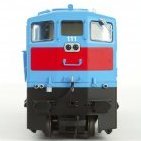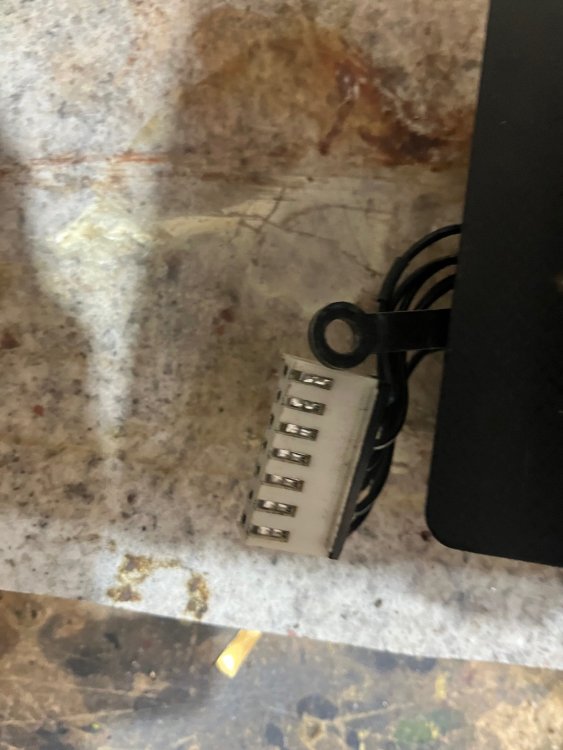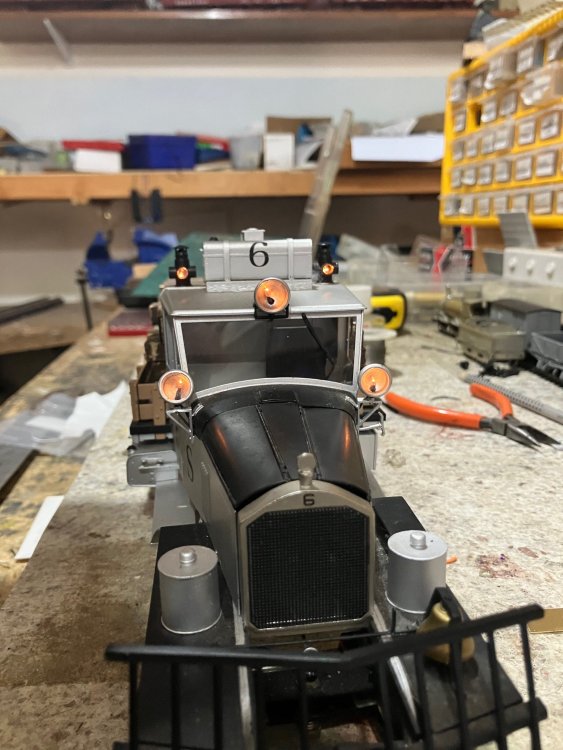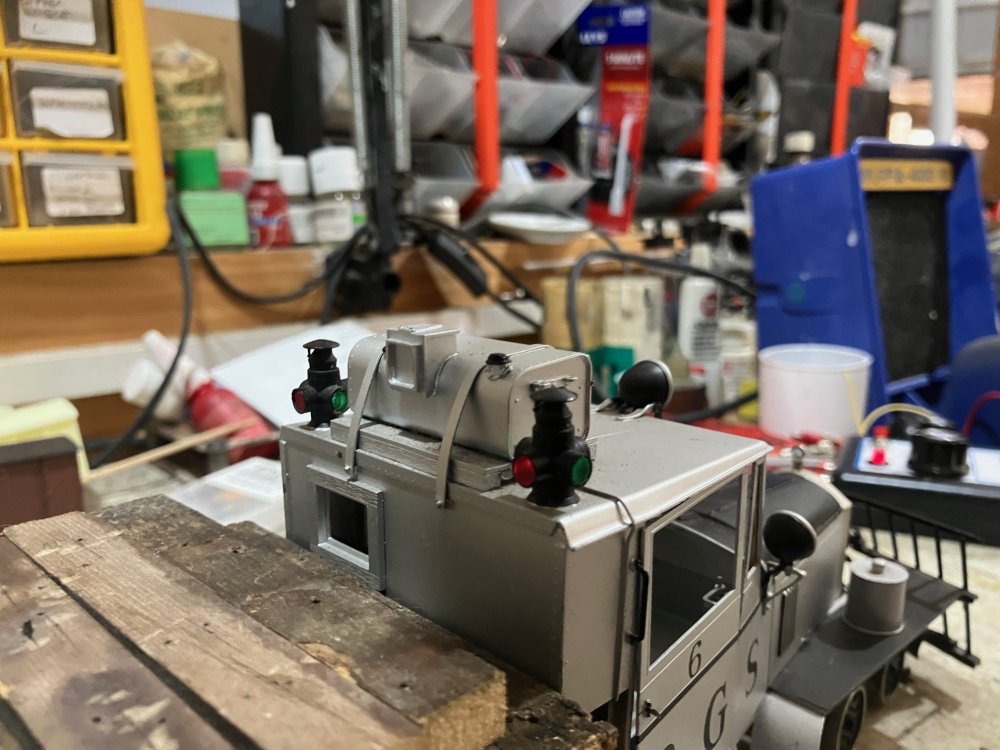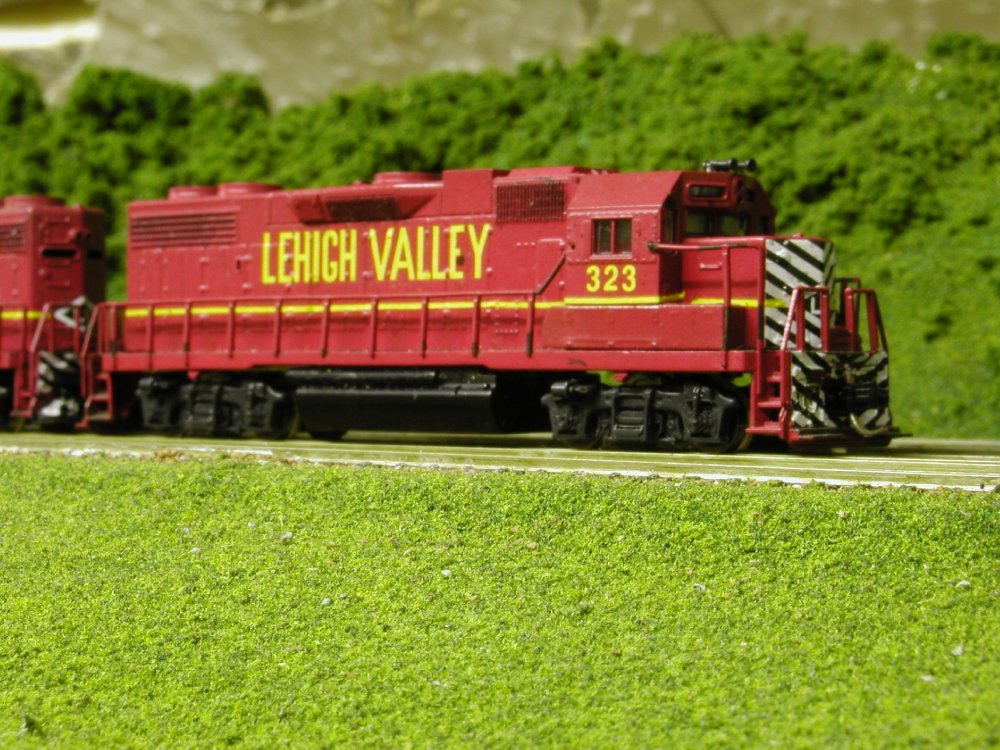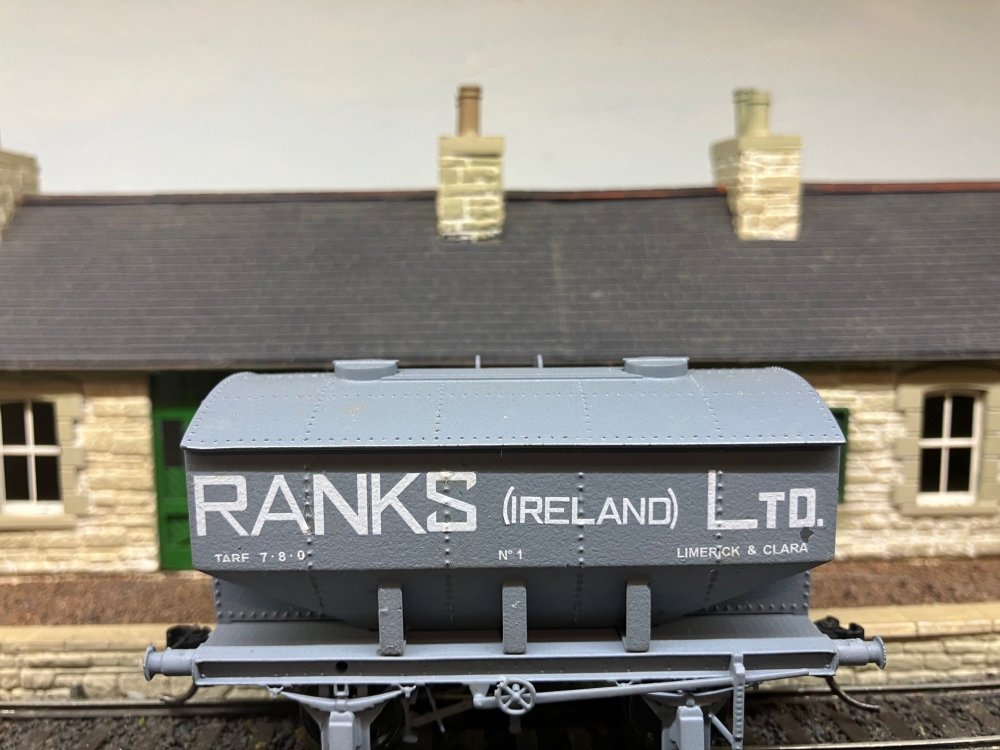-
Posts
4,878 -
Joined
-
Last visited
-
Days Won
119
Mayner last won the day on July 7
Mayner had the most liked content!
Personal Information
-
Location
Hamilton, New Zealand
Converted
-
Biography
Born Dublin, lived most of my life in Dublin and the UK. One time builder, moved to New Zealand several years ago. One time WHHR Volunteer Portmadoc, track ganger, diesel loco driver and bulldozer driver, plant operator, now an Armchair
Converted
-
Interests
My family, solving problems, anything to do with railways, travel, blues, rock, jazz, stirring thing
Recent Profile Visitors
The recent visitors block is disabled and is not being shown to other users.
Mayner's Achievements
-
Worth enquiring with the National Railway Museum York Sharp Stewart loco drawings (most likely GAs) are included in their North British Locomotive drawing collection https://collection.sciencemuseumgroup.org.uk/objects/co27933/north-british-locomotive-co-ltd-drawings. The 7mm Narrow Gauge Society published a book of 'Irish Narrow Gauge Scale Drawings" which includes CVBT No4 and CVR Railcar 1 https://7mmnga.org.uk/sales/publications/publication_details.php?ref=NLE06. The drawings are in simplified diagram form rather than general arrangement, as far as I recall the drawing of No4 includes CVR modifications.
-
The 6 Compt 3rds appear to have gone/been converted to Turf Wagons during the Emergency I think the running numbers and other details were taken from the GSWR diagram book. The coaches with the curved in ends are likely to be ex-WLWR. I completed a pair of SSM 6wheelers in GSR livery several years ago a Lav Composite & a Brake 3rd and have another 4 GSWR 6wheelers to assemble incl a 6 Compt 3rd for a 21mm gauge Burma Rd layout if I ever get round to assembling the coaches or layout. I am planning to complete the 3rd in 1920s GSWR/GSR purple lake livery.
-
It might be worth checking with Roger/Alphagraphix whether he produced a 7mm model of Sprite. I have a sneaking suspicion that he first released an etched kit for a GSWR paycar and MGW 2-2-2T Bee/Elf before going on to produce more mainstream loco such as his range of "West Cork" tanks.
-
Yeah we have four cats (all male) and our teenager wants a horse! I had a largish stash of Leslie's wagons which hopefully I will get to build some day. We had a nice Christmas Day herself cooking turkey dinner for ma-in law and myself, while teenager spent day in their cave gaming and ordering in from kitchen. I charged the batteries on large scale locos so managed to run some trains out in the morning and home after tea. Day was warm and sunny though we are promised a downpour today, and for most of next week.
-
Back to the wreckbench to restore #464s headlight and get RGS Motor #6 head and marker lights when running in a forward direction. #464 headlight ceased to function after one of the jumper cables between the loco and tender failed several months ago. The wiring on the Bachmann K27 2-8-2 is quite complex with a circuit board in the tender and smoke box linked by a cable loom with two multiple connectors between loco and tender. The connections from the loom to the multi socket on the RHS of the loco wasn't in a great state when I picked up the loco well used second hand about 8 years ago, luckily most of the wiring was redundant since I converted the loco to on-board battery control ending up with one functional wire the -feed to the headlight which failed several months ago. The smokeboard circuit board control lighting functions, headlamp, marker, cab/possibly firebox lighting and redundant DC/DCC changeover and smoke unit switches. Original plan was to link the headlamp LED with the marker-light circuit but ended up blowing the marker light circuit instead!. In the end used a Kiwi style no 8 baler wire repair crude but effective. 1st did some testing with a multi meter and discovered that some of the loom and LED wiring did not follow the usual conventions for + - the negative lead to the headlamp was red and positive feed to the lighting circuit board white. To complicate things further I used orange and brown for + & - jumpers from the circuit board to the headlight. Actually managed to run some trains on Christmas Day. Thankfully #464s headlight fed through a resister now works, though I have not connected the marker (classification) lights. Apparrently marker lights were not usually illumiated in daylight. Motor #6 is fitted with very small filiment bulbs rather than LEDs, capture the atmosphere of 1930s 6v automobile headlights. Looks like the prototype may have kerosene marker lights, possibly from a caboose. The RGS was very much a boot strap operation that would make Forbes County Donegal extravagent in comparisson. Interestingly the entire RGS Goose (Motor) fleet has survived some in operating order on heritage lines and museums in Colorado & California, someone actually built a replica of the origonal goose Motor 1 which was used as a source of parts to build Motor 6 during the mid-1930s Getting #6 lights functioning going forward was basically a case of soldering a jumper between the F & R lighting pads on the radio receiver/decoder
-
I experienced similar issues accessing both this newsgroup and in accceesing the Accurascale website during the past week, otherwise no problems with internet access here in New Zealand or internationally.
-

"Voiding the Warranty" - Mol's experiments in 21mm gauge
Mayner replied to Mol_PMB's topic in Irish Models
Probabably worth checking out firms in the jewellery sector in Birmingham that carry out brass/lost wax casting. I have used a local business that carries out lost wax casting to produce brass castings from metal, resin, plastic masters and 3D models to produce brass castings including buffers. -

"Voiding the Warranty" - Mol's experiments in 21mm gauge
Mayner replied to Mol_PMB's topic in Irish Models
Bulkgrain loading/discharge arrangements at Ranks Clara The grating is likely to have been used for grain truck discharge after rail operations ceased, probably on top of an original rail discharge pit. A similar grating may have been used for rail discharge, possibly for one wagon linked by conveyor to the elevator system There was a concrete slab complete with two inset sidings when I visited the site 30 odd years ago, one of the sidings served a large grain elevator and a small dry corrugated good store, the second siding served a second larger dry goods store. -

"Voiding the Warranty" - Mol's experiments in 21mm gauge
Mayner replied to Mol_PMB's topic in Irish Models
Webbs Mill/Quarterstown may have focused on processing animal feed following the Cork Milling Co takeover. Mallow is an important dairying centre, its likely that the mill processed corn (maize) imported from the States as supplementary cattle feed during the winter/spring. Interestingly the Dairygold Mallow powder milk plant is similar in scale to plants in the Waikato and likely to have exported milk powder by rail through the Mallow. https://en.wikipedia.org/wiki/Dairygold. It looks like CIE experienced a signifiicant increase in bulk grain traffic during the mid-late 50s with the construction/modification of H Vans to Bulk Grain wagons, previously CIE had a total of 18 Bulk Grain Wagons built by the GSR during the mid-1930s, 10 railway owned wagons, 8 owned by Ranks Ireland for its own traffic. There is a photo in the NLI O'Dea collection of bulk grain being transferred from an ex-GS grain wagon to a truck at Fermoy station during the early-mid 60s. The grain was transferred from rail to road using a small portable (probabably petrol powered) screw conveyor) that allowed the graiin to be unloaded at track level without the aid of a pit. -
I used an LGB 22 Volt 2 amp combined controller and power unit while running analogue power before converting to DCC using a mid level Digitrax (Empire Builder) command station on the 5amp setting. I have used battery RC control for the past 10 years locos powered by pairs of 7.2v 3000ma NiMH batteries (14.2V). Unlike DCC radio control systems are produced by cottage industry suppliers such as RCTrains https://www.rctrains.co.uk/, probabably best to contact the Gauge 1 Society or Garden Railway groups if your looking at usingb battery RC.
-

"Voiding the Warranty" - Mol's experiments in 21mm gauge
Mayner replied to Mol_PMB's topic in Irish Models
In good company, apparrently the GSR manged to spell Drumshanbo incorrectly in both Irish and English on the bilingual station nameboard Possibly someone in authority knowing better or failing to check the spelling/pronounciation with the locals -

"Voiding the Warranty" - Mol's experiments in 21mm gauge
Mayner replied to Mol_PMB's topic in Irish Models
A product of the Irish education system with good grade in Irish when I completed my Leaving Cert 50 years ago I still haven't got my head around the pronounciation and use of the 'fada' and as they say the séimhiú "was in my fathers time" and he spoke about being put off Irish when a new teacher introduced the Munster (Kerry) dialect in a Galway school! Had fun and games with my Irish (Dub with a country accent) pronouncation of UK and some US placenames but eventually learned to pronounce some Welsh and Kiwi place names correctly mainly by listening to the locals. Back to Pauls dilemma, I don't think a GSR/CIE style bi-lingual signs board would be appropriate for a private siding, I seem to have mislaid my copy of a 1960 CIE WTT and unable to check the 'official railway" name of the siding. Its possible the Webb family may have sold the mill at some stage following the establishment of the Free State, Quarterstown House had been converted to a convent by the 1940s. Milling was supposed to have ceased by 1957. Cold Chon may not have bothered to advertise their presence signed into a long term contract to supply tar to the nearby Cork County council road depot and the 'mill owners" much incentive to maintain the place. The Land Commission began to acquire large country estates and divide the land into small holding from the early 1900s onwards, many of the large Country Houses were sold to religious orders or prominent Irish people during the 20s and 30s as members of the 'gentry' returned to the UK or consolidated their Irish holdings. A sign in the style of a Webb Milling sign or seal or a Quarterstown roadsign may be more appropriate. For many years the name of small towns/villages such as quarterstown were displayed on simple square road signs (black border and lettering on white background) in similar style to pre-1960 UK roadsigns https://www.hattons.co.uk/52086/ancorton_models_n_605_pre_1960_s_road_signs_set_5/stockdetail?srsltid=AfmBOorag12QA99NdUrAy8Z3h9lTVW5mF9PelAQm2nv1AqPb7N4_xe34 (without red triangle!) From memory names were sometimes in English or bi lingual cannot find a photo! -
Applying waterslide transfers over rivets/raised detail is bascially a case practice and suitable preparation and selection of suitable transfers, wetting agents & varnish/sealant. N Scale Lehigh Valley Diesel. One my pride and joy, very much a hard worked 'layout loco' I finished the loco in LV livery about 25 years ago using Microscale waterslide decal set, incl black/white nose/pilot stripes s, Micro-Set (wetting setting agent) Micro-Sol (solvent/softner) around details/irregular surfaces. Loco painted in a gloss aerosol red then, then finished with a semi matt aerosol. Paint did not adhere too well to handrails which were molded in a black flexible plastic. 4mm Ranks Ireland wagon (Enlargement shows up the blemishes!) Decals comissioned from Railtec Transfers, Humbrol Decalfix (recommended by Railtec, Micro-Set Micro-Sol incompitaible). Main challenge was applying large RANKS (Ireland) Ltd element of decal due to its sheer size, applied RANKS (Ireland) Ltd as 3 separate decals! (Ireland) after applying the two larger decals! Again model first spray painted grey with a gloss finish and then sealed with a matt/semi-matt finish once decals had dried out I originally intended to have the decal pad printed comercially, but printer declined to print further wagons after pad printing the initial batch of 20T Brake Vans
-
I agree with Andy that it would be best to start out with re-scaling one kit to 4mm both in terms of identifying any pitfalls in rescaling a model from 7-4mm scale and overwhelming the (very small) market for 4mm Irish outline kits. I usually managed to sell a minimum of 10 JM Design kits on the initial production run, though demand/sales for the MGWR Vans and the 4w Bulleid PO Van were significantly lower than other kits. A 4mm Alphagraphix J26 would largely duplicate the SSM MGW E Class/J26, the Alphagraphix kit appears to be based on a loco in late GSR/CIE condition with riveted smokebox, while the SSM kit in includes parts to assemble a loco in MGW/GSR condition with flush smokebox and parts to assemble the Tramore version of the loco with extended cab and recessed cab steps, so something of a Catch 22 situation, though I prepared an etched overlay for a riveted J26 smokebox. A J18/19 has been on my to do list for 40 years, so I'll put my hand up for two. John
-
Nickle silver basically a superior material to work, basically stronger, easier to solder and easier to paint compared to brass. Best contact Des on availability, Studio Scale models traditionally held kits in stock though may have shifted to supplying kits to order. Des supplied tender etchs and castings at relatively short notice for a GSWR 52 Class 4-4-0 I produced several years ago.
.png.c363cdf5c3fb7955cd92a55eb6dbbae0.png)

